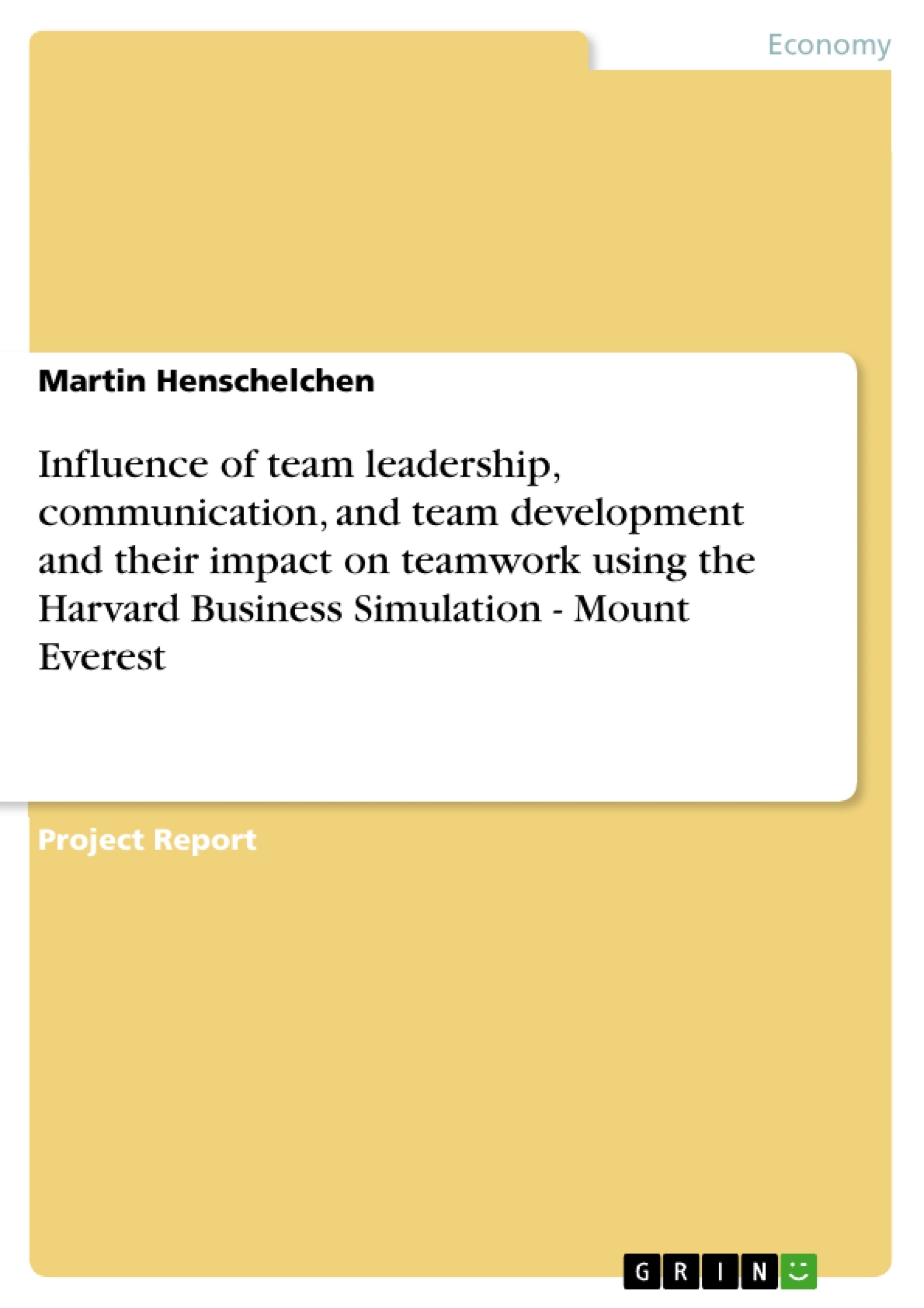Group dynamics have always characterized the social fabric of our society. Both in leisure activities and professional work, the ability to work together in teams is often crucial. This is especially relevant for managing projects. Often success depends on the interaction of individuals in a team. This interaction will be discussed in the following work. The basis for this is the Harvard simulation of a Mount Everest climb. As in project management, the team members face different challenges that they must solve together. Leadership, team development, communication and their influence on the project’s success and how the team members behave during the simulation will be investigated. These will be analysed based on scientific literature, and realizations will be revealed.
Table of Contents
- EXECUTIVE SUMMARY
- INTRODUCTION
- STORY
- PRACTICAL EXECUTION
- TEAM DEVELOPMENT
- COMMUNICATION
- LEADERSHIP
- CONCLUSION
- REFERENCES
- APPENDIX
Objectives and Key Themes
This report investigates the impact of team leadership, communication, and development on teamwork in the context of a challenging project simulation, using the Harvard Business School's Mount Everest climb. The report examines how team dynamics influence the project's success by analyzing the simulation's outcomes, drawing upon scientific literature, and highlighting key observations.
- Team development and its impact on teamwork
- Influence of effective communication on project success
- The role of leadership in motivating and guiding team members
- The challenges and opportunities of working in a complex project environment
- The importance of collaboration and shared decision-making in achieving project goals
Chapter Summaries
- Introduction: This chapter provides an overview of the report, emphasizing the importance of teamwork and group dynamics in project management. It introduces the Harvard Business School's Mount Everest climb simulation as a tool for studying these dynamics.
- Story: This chapter describes the Mount Everest climb simulation, detailing the team roles, the project's challenges, and the objectives of the exercise. It emphasizes the impact of individual actions and communication on the overall project success.
- Practical Execution: This section focuses on the practical aspects of the simulation, including the steps taken and the challenges faced by the team during the climb. It highlights the importance of planning, coordination, and adapting to changing circumstances.
- Team Development: This chapter analyzes the stages of team development as observed in the simulation, focusing on Tuckman's phase model and the team's progression through various stages. It examines the impact of conflict and cooperation on team performance.
- Communication: This chapter delves into the crucial role of communication in the simulation, analyzing the challenges of maintaining effective communication channels and the impact of miscommunication on project success.
- Leadership: This chapter examines the leadership role in the simulation, focusing on the team leader's strategies for motivating and guiding the team. It analyzes the leader's use of transactional and transformational approaches and their effectiveness in achieving project goals.
Keywords
This report focuses on the key concepts of team dynamics, leadership, communication, and project management in the context of a challenging simulation. It delves into the practical applications of Tuckman's phase model for team development, the importance of effective communication strategies, and the different leadership approaches that can be employed in complex project settings.
- Quote paper
- Martin Henschelchen (Author), 2022, Influence of team leadership, communication, and team development and their impact on teamwork using the Harvard Business Simulation - Mount Everest, Munich, GRIN Verlag, https://www.grin.com/document/1222923



